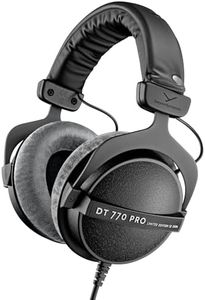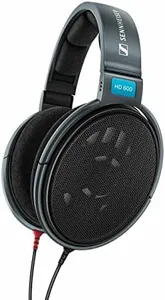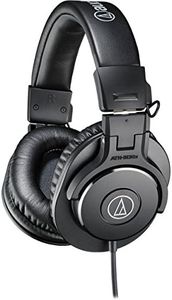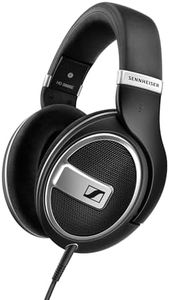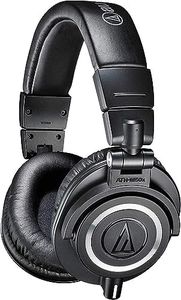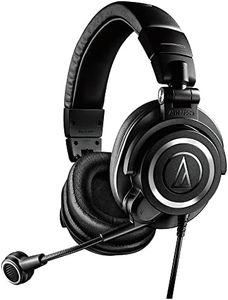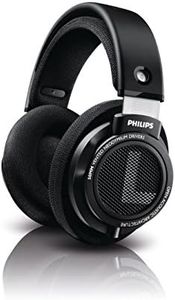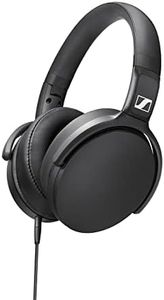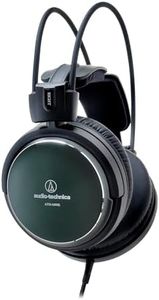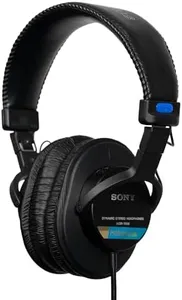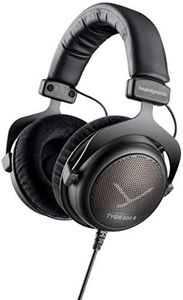We Use CookiesWe use cookies to enhance the security, performance,
functionality and for analytical and promotional activities. By continuing to browse this site you
are agreeing to our privacy policy
10 Best Wired Headphones
From leading brands and best sellers available on the web.Buying Guide for the Best Wired Headphones
Choosing the right wired headphones can significantly enhance your listening experience, whether you're enjoying music, watching movies, or taking calls. Since they're a more direct connection to your device compared to wireless options, paying attention to the key specifications will help you find a pair that fits your comfort, sound quality needs, and lifestyle. Think about where and how you'll use the headphones, as well as which features matter most to you.Driver SizeThe driver in headphones is the component that converts electrical signals into sound. Driver size, usually measured in millimeters (mm), affects how headphones handle bass and overall loudness, but bigger isn't always better. Smaller drivers (around 20-30mm) are common in earbuds and can still provide clear sound, while larger drivers (over 40mm) are in over-ear or on-ear headphones and typically offer stronger bass and fuller sound. If you value deeper bass and immersive audio, larger drivers may suit you, but if you prefer portability or balanced sound, size isn't the only factor to focus on.
ImpedanceImpedance, measured in ohms (Ω), reflects how much power the headphones require to produce sound at a good volume. Low impedance headphones (16-32Ω) are easier to drive and work well with smartphones, laptops, or portable audio players. High impedance headphones (above 50Ω) need more power and are best used with dedicated headphone amplifiers. Choose low impedance headphones for simple plug-and-play use, and only consider high impedance models if you plan to use specialized audio equipment.
Frequency ResponseFrequency response is the range of sound frequencies the headphones can reproduce, typically listed in Hertz (Hz) as something like 20Hz–20kHz. This roughly matches the range of human hearing, where the lower numbers are bass and higher numbers are treble. A wider range can suggest the headphones are capable of deeper lows and crisper highs, but the quality of those sounds matters more than the numbers. For most listeners, standard frequency responses cover all normal music needs, so use this as a general guide but prioritize how the sound feels to you.
Design (Over-Ear, On-Ear, In-Ear)The design type describes how the headphones fit on or in your ears. Over-ear headphones (circumaural) surround your ears, offering comfort and better noise isolation but can be bulky. On-ear (supra-aural) headphones rest on top of your ears and are more compact, though some people find them less comfortable for long use. In-ear headphones (earbuds) fit inside your ear canal, are very portable, and can block external sound, but comfort and sound quality can vary. Choose the design that best matches how and where you'll wear them—over-ear for immersive listening at home, in-ear for commuting, and on-ear for a mix of both.
Cable Length and TypeCable length determines how far you can be from your device, usually ranging from about 1 to 3 meters. A short cable is convenient for on-the-go use, while a longer one can be useful at a desk or in a studio. Some cables are detachable, allowing for replacements, and others include controls or microphones for calls. Also, check the plug type (straight or angled), and make sure it's compatible with your device (standard 3.5mm jack, 6.3mm, etc). Pick the cable features and length that fit how you intend to use your headphones.
Noise Isolation and CancellationNoise isolation is a physical feature where the headphone design blocks out some outside noise, often found in over-ear or in-ear types. Noise cancellation is an electronic function that reduces ambient sound by creating sound waves that counter external noise. Passive isolation is enough for most users who just want to minimize distractions, while noise-cancelling features are better if you often listen in noisy environments like airplanes or busy offices. Think about your usual listening environment to decide if you need one, the other, or both.
Comfort and Build QualityComfort is influenced by headband pressure, ear pad material, and overall weight. If you plan to wear headphones for extended periods, look for lightweight models with soft padding and adjustable bands. Build quality covers how durable the headphones feel—are they made from sturdy plastics or metal, and can they withstand daily use? If you'll be taking them on the go or using them frequently, prioritize comfort and materials that stand up to wear and tear.
SensitivitySensitivity, measured in decibels (dB), describes how loudly headphones can play at a given power level. Higher sensitivity means headphones can get louder without needing as much power. Most headphones range from 85 to 110 dB. If you use low-powered devices (such as phones), higher sensitivity ensures adequate volume, but be careful not to use headphones at very high volumes for long periods to protect your hearing.
